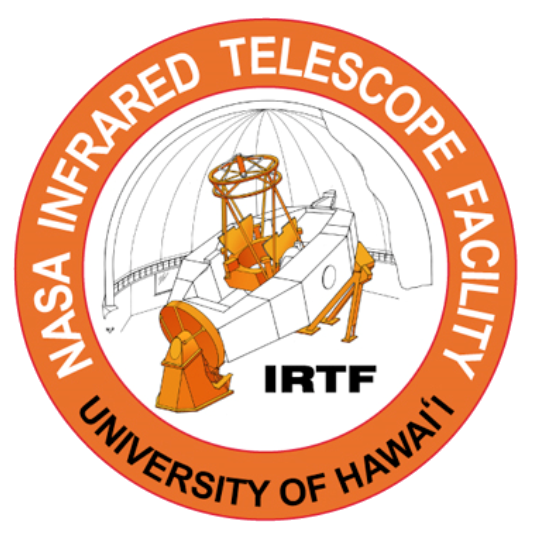IRTF DAPR Proposal Instructions
IMPORTANT Instructions for preparing IRTF observing proposals under Dual-Anonymous Peer Review (DAPR) Guidelines.
(Updated for Semester 2023A, posted August 30, 2022 – Please note change to these instructions that is highlighted in red)
The IRTF has been instructed by NASA Headquarters to implement Dual-Anonymous Peer Review (DAPR) procedures in the review and ranking of observing proposals. While it is impossible to guarantee full anonymity in the proposal review process, we have developed a plan that will help make the review of observing proposals as fair and unbiased as is realistically possible (modeled after procedures being implemented by ESO and Keck Observatories). Beginning with applications submitted for the 2022A semester (Call for Proposals posted on or near September 1, 2021), investigators will be required to submit proposals that meet certain criteria for anonymity.
The application process for observing time will remain much the same as it has been in the past, with the application having both a webpage entry form, and a pdf file attachment.
The IRTF Online Application Form has been modified to include extra information:
A short title for the proposal. This is in addition to the regular program title. It is limited in length to a maximum of 5 words, and will be used during the Telescope Allocation Committee (TAC) review as a means of making anonymous reference to the proposal.
Additional science categories have been added that divide areas of Solar System research.
A text field has been added to report on the status of IRTF observations obtained by the PI over the previous 2 years. This section has been moved from the uploaded file attachment to the web application form, allowing this information to be easily hidden from the TAC members during their review of the proposals. Please keep this section succinct – it should only contain reports on data status for programs where the PI of the new proposal was PI on past IRTF proposals over the previous four semesters.
Provide all information requested in the Online Application form, just as in past semesters. Only the anonymous portions (those that cannot linked to the proposing team) will be seen by the TAC during the proposal review.
The pdf attachment, which includes the Scientific and Technical Cases, figures, references and target list, must be prepared in a way that hides the identity of proposing team, institutions or direct references to previous works. For guidelines and examples of how to anonymize the content of this file, please refer to the NASA DAPR webpage at: NASA DAPR webpage.
Some essential points from this webpage are reproduced here:
Do not include the names of the personnel associated with the proposal or their organizational affiliations. This includes but is not limited to, page headers, footers, diagrams, figures, or watermarks. This does not include references to past work, which should be included whenever relevant (see below).
References must be written in the form of a number in a square bracket, e.g. [1], which will then correspond to the full citation in the reference list.
When citing references, use third person neutral wording. This especially applies to self-referencing. For example, replace phrases like "as we have shown in our previous work [17], …" with "as previously shown [17], …"
Depending on the program element, it may be occasionally important to cite exclusive access datasets, non-public software, unpublished data, or findings that have been presented in public before but are not citable. Each of these may reveal (or strongly imply) the investigators on the proposal. In these instances, proposers must use language such as "obtained in private communication" or "from private consultation" when referring to such potentially identifying work.
In preparing the attachment file, you must use the latest version of the MS Word or LaTex template files, version Sept. 2021, that are available on the IRTF Observing Time Applications page.
For investigators who carry out long-term investigations with the IRTF, this is an important time for you to review the Scientific and Technical Cases for your proposals and update as needed. Make sure that identifying information is removed from the text, figures and captions, and that references are properly identified in the text using numbers in square brackets.
A large fraction of the observations carried out with IRTF are part of long-running, multi-semester research projects. It is important that the link be made between results from those past observations and the new observations being proposed. In the first iteration of DAPR guidelines (posted for semester 2022A), text for the Science and Technical Justifications could not include words implying ownership of previous work. Under these strict guidelines, it was difficult for some proposals involving long-term programs to make compelling arguments for additional observations, and made assessing the value of new observations hard for TAC members. Therefore, starting with the 2023A semester, we are allowing more freedom in the discussion of these longer-term programs. Discussing the goals of a long-term program, and how the proposed observations fit in will again be allowed, along with words and phrases that reflect ownership (such as "Our previous IRTF observations revealed…"), as long as proposal team members ARE NOT explicitly identified in the text. Any references to past published works need to be identified using numbers in square brackets, as described above.
The TAC will provide comments for each proposal that will be included (anonymously) in the acceptance / rejection letters sent to the PIs. The purpose for this feedback is to provide suggestions for improving future submissions of a proposal. In the past, it was appropriate for a PI to respond directly to the TAC comments in follow-on proposals. Beginning in the 2022A semester, PIs should refrain from adding words to the proposal that directly addresses past TAC comments. Instead, consider the TAC comments and implement those suggestions in future proposals as appropriate without reference to the TAC.
IMPORTANT NOTE: PLEASE follow the above guidelines in preparing your proposal for observing time CAREFULLY. Any proposal that does not make a good-faith effort to follow the guidelines for anonymity WILL BE REJECTED.


